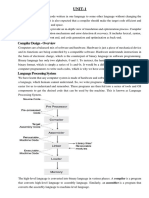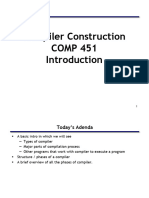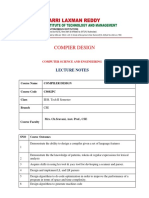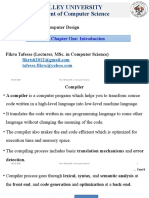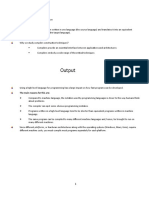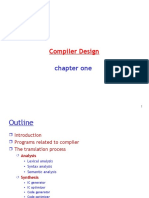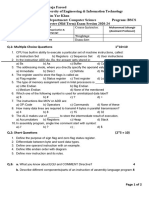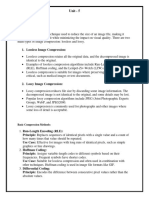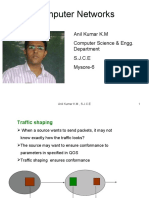0% found this document useful (0 votes)
6 views4 pagesPhases of Compiler
The document outlines the phases of a compiler, which are divided into the analysis phase (front-end) and synthesis phase (back-end), detailing specific steps like lexical, syntax, and semantic analysis. It also discusses compiler passes, distinguishing between one-pass and two-pass compilers, and introduces the concept of cross compilers that generate code for different platforms. Additionally, it highlights bootstrapping as a technique for developing advanced compilers using simpler versions of themselves.
Uploaded by
shreya10135Copyright
© © All Rights Reserved
We take content rights seriously. If you suspect this is your content, claim it here.
Available Formats
Download as DOCX, PDF, TXT or read online on Scribd
0% found this document useful (0 votes)
6 views4 pagesPhases of Compiler
The document outlines the phases of a compiler, which are divided into the analysis phase (front-end) and synthesis phase (back-end), detailing specific steps like lexical, syntax, and semantic analysis. It also discusses compiler passes, distinguishing between one-pass and two-pass compilers, and introduces the concept of cross compilers that generate code for different platforms. Additionally, it highlights bootstrapping as a technique for developing advanced compilers using simpler versions of themselves.
Uploaded by
shreya10135Copyright
© © All Rights Reserved
We take content rights seriously. If you suspect this is your content, claim it here.
Available Formats
Download as DOCX, PDF, TXT or read online on Scribd
/ 4










